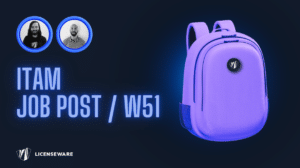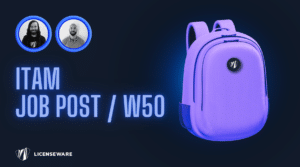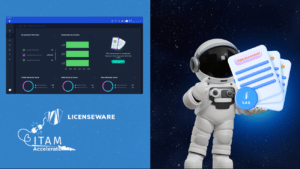Oracle’s SE2 Clarification: A Hidden Compliance Trap for MCM Processor Users
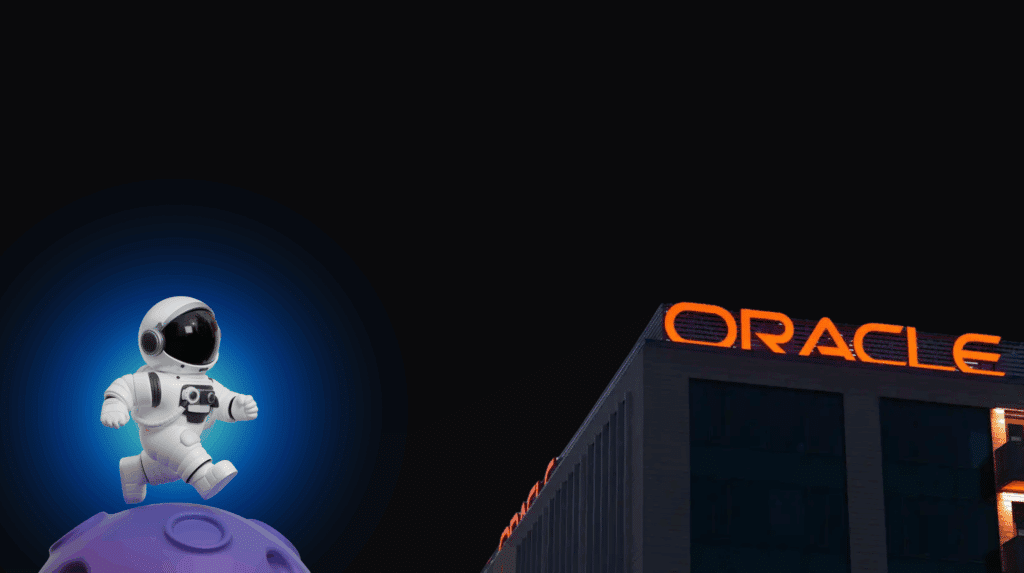
Oracle Database Standard Edition 2 (SE2) has long been positioned as a cost-effective database offering for smaller workloads, with a key licensing limitation: no more than two sockets per server. On paper, this seems simple. But the reality of modern processor design—specifically the use of Multi-Chip Modules (MCMs)—introduces significant compliance risk for those not aware of how Oracle interprets “socket.”
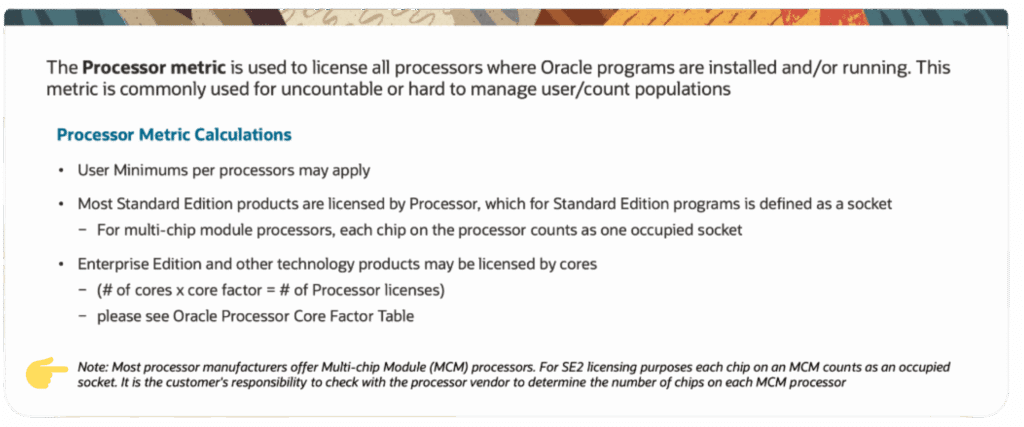
MCM Processors: The Technical Reality
Modern CPUs, like AMD’s EPYC or IBM’s Power processors, are frequently designed using a multi-chip module architecture. Instead of a single silicon die per processor, MCMs use multiple dies (or “chiplets”) in a single socketed package to increase core density and manufacturing efficiency.
While this is technically advanced and beneficial from a performance standpoint, Oracle’s interpretation of this design can be problematic from a licensing perspective.
Oracle’s Interpretation: Chip = Socket
Oracle’s official documentation makes clear that for SE2:
“Each chip in a multi-chip module is counted as one occupied socket.”
This means:
- A single CPU package containing 2 chiplets = 2 sockets, according to Oracle.
- A dual-socket server using 2 such CPUs = 4 sockets, violating SE2’s hard 2-socket limit.
This rule applies regardless of physical socket count. Oracle licensing considers each chip within the CPU package to be a separate occupied socket for Standard Edition products.
Risk Exposure: SE2 Non-Compliance on Non-ODA Systems
This interpretation creates a hidden compliance trap for customers running SE2 on commodity hardware with MCM-based processors.
⚠️ Example
| CPU Configuration | Oracle Socket Count (SE2) | SE2-Compliant? |
|---|---|---|
| 1 x Intel Xeon (monolithic die) | 1 | ✅ Yes |
| 1 x AMD EPYC (2 chiplets) | 2 | ✅ Yes |
| 2 x AMD EPYC (2 chiplets each) | 4 | ❌ No |
Without realizing it, a seemingly compliant 2-socket server may actually count as 4 sockets under Oracle’s rules.
Oracle Database Appliance (ODA): The Notable Exception
Oracle does offer a documented exception for its own hardware. In the Oracle Database Appliance (ODA) Licensing Manual, Oracle explicitly allows:
- Use of MCMs beyond the 2-socket limit, and
- Per-core licensing instead of per-socket licensing.
Excerpt from the ODA manual:
“You may exceed the 2 sockets per server limit… Oracle Database Standard Edition 2 requires one processor license for every 8 enabled cores on Oracle Database Appliance running multi-chip modules.”
This model is clearly intended to accommodate the use of MCM processors in Oracle’s own engineered systems, without penalizing customers under the rigid SE2 socket rule.
ODA vs Non-ODA Licensing Comparison
| Criteria | Non-ODA Infrastructure | Oracle Database Appliance (ODA) |
|---|---|---|
| MCM processors allowed? | Yes, but each chip counts as a socket | Yes, with flexible licensing |
| SE2 socket limit | Strict 2 occupied sockets | May exceed 2 sockets with per-core licensing |
| Interpretation flexibility | None; customers must check chiplet count | Codified in Oracle documentation |
| Core-based SE2 licensing allowed? | ❌ No | ✅ Yes (1 license per 8 enabled cores) |
| Suitable for AMD EPYC/IBM Power? | Risk of non-compliance | Fully supported |
Recommendations
If you’re deploying Oracle SE2 and using modern MCM-based processors, consider the following:
- Audit your hardware: Check your CPUs’ chiplet configurations to understand how Oracle will interpret socket count.
- Evaluate compliance risk: If Oracle counts your system as having more than 2 sockets, you may already be out of compliance.
- Consider ODA if scaling: Oracle Database Appliance provides flexibility in licensing for MCMs and may be worth evaluating if you’re scaling up on SE2.
- Engage license experts: Misinterpretation or poor documentation of your architecture could prove costly during an audit.





